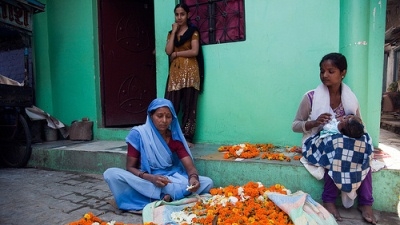India stands at an unprecedented moment in its history. In the six and half decades since independence, the country has brought about a landmark agricultural revolution that has transformed the nation from chronic dependence on food imports into a global agricultural powerhouse that is not only a net exporter of food but also the world’s largest producer of milk, legumes, and spices. Life expectancy has more than doubled, literacy rates have quadrupled, health conditions have improved, and a sizeable middle class has emerged. India is now home to globally recognized companies in pharmaceuticals and steel, as well as in information and space technologies.
The country is in the midst of an enormous wave of urbanization. Urban centers are growing exponentially as legions of people flock to towns and cities in search of a better life. This unparalleled movement of the population calls for massive investments in the creation of jobs, housing, and infrastructure to meet the people’s soaring aspirations.
The historic changes unfolding have placed the country at a unique juncture. India now has the opportunity to “bend the arc of history” by lifting its remaining 400 million poor people out of poverty, and ensuring that the sizeable numbers who have recently escaped poverty are no longer vulnerable to falling back. Low-income states will need support to catch up with more prosperous states, disadvantaged groups brought into the mainstream to reap the benefits of economic growth, and women — who “hold up half the sky” — empowered to take their rightful place in the socioeconomic fabric of the country.
Strategy reflects India’s historic changes
In keeping with recent changes, the World Bank Group’s new Country Partnership Strategy will guide its support to India over the next five years (2013-2017). The strategy aims to help the country lay the foundations for achieving its longer-term vision of “faster, more inclusive growth.”
A key feature of the new strategy is the significant shift in support toward low-income and special category states, where many of India’s poor and disadvantaged live. This is also the institution’s first country strategy to set specific goals for reducing poverty and increasing prosperity for the poorest people.
The new strategy proposes a lending program of $3 billion to $5 billion each year over the next five years. Sixty percent of the financing will go to state government-backed projects. Half of this, or 30% of total lending, will go to low-income or special category states, up from 18% of lending under the previous strategy.
The Bank’s India strategy outlines a scenario in which India improves the inclusiveness of the economic growth to that achieved by its best-performing states. This would cut poverty to 5.5% of the population by 2030 from 29.8% in 2010 and increase the share of people living above the threshold where they are at risk of falling back into poverty to 41.3% from 19.1%. If India were to grow as it did from 2005 to 2010 without making that growth more inclusive, poverty would fall to only 12.3% while 33.6% would remain above the vulnerability threshold by 2030.
Key focus areas
In the next five years the CPS will focus on three key areas: integration, transformation, and inclusion. A common theme across these areas will be improved governance, environmental sustainability, and gender equality.
- Integration: Clearly, India’s massive infrastructure needs cannot be addressed through public investments alone. The strategy will accordingly focus on improving both public and private investments in infrastructure. For instance, the power sector, vital for economic growth, will need to build greater capacity and improve the reliability of generation, transmission and distribution. A vibrant manufacturing sector— especially small and medium size enterprises that are critical for the creation of jobs — will require the reform of labor laws, and improved access to land and finance. Better integration would result in more-balanced growth among Indian states, helping low-income states converge more quickly with their faster-growing neighbors.
- Transformation: By 2031, it is projected that 600 million people will live in India’s cities. Well-managed urbanization can bring innumerable benefits; the strategy will focus on supporting the efforts of national, state, and city governments to improve the livability of urban areas, especially secondary cities, while at the same time working toward higher agricultural productivity.
- Inclusion: Economic integration and rural-urban transformation can benefit a large share of India’s population only if there is a stronger focus on human development and on policies that help make growth inclusive. The World Bank Group will support the central and state governments in strengthening the nutrition policy as well as systems and capacities to improve nutrition. It will support government efforts to improve education mainly at the secondary and tertiary levels, with a more pronounced focus on quality across all levels of education. Special focus will be placed on ensuring access to education for underprivileged children, retaining girls in secondary education, and opening opportunities in higher education. It will also work to improve access to finance and to enhance social protection coverage for the more than 90% of the labor force that works in the informal sector.

